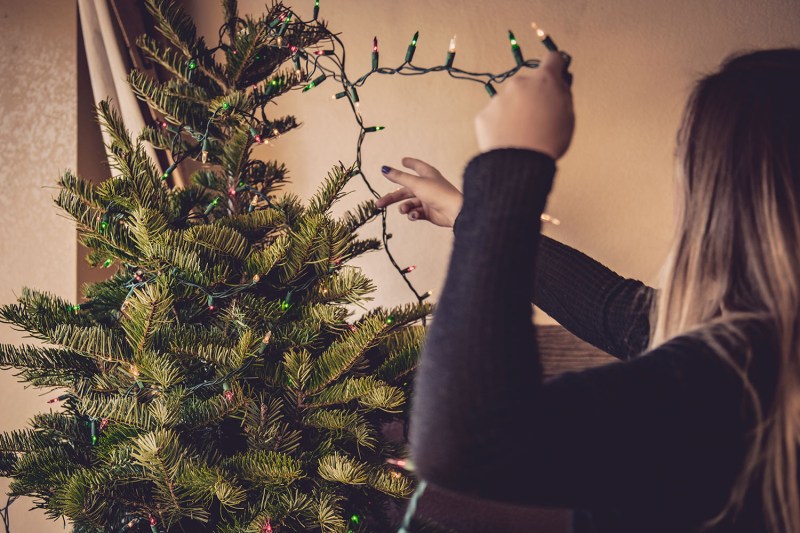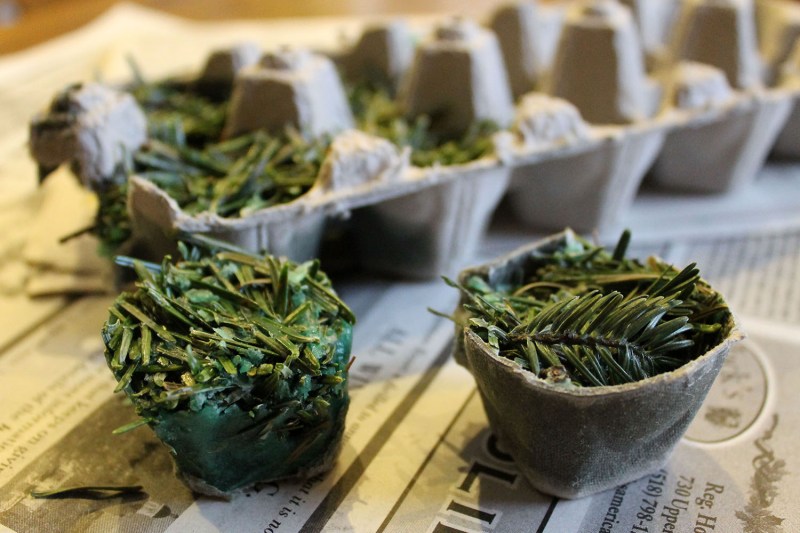The post-holiday hangover is real. No, not that kind of hangover (although you might have that too), but the feeling that comes after Christmas is over and it’s time to pack up the ornaments, toss out those leftover holiday cookies, and try to remember where you left off at work.
The most arduous task of all is figuring out what to do with your Christmas tree. Some people simply haul the huge thing outside, shedding countless needles throughout your house on its way out, and toss it on the curb to be picked up by garbagemen and added to the ever-growing pile of landfill. It’s a sad ending to something that was once adorned with tinsel and lights and filled your home with so much joy and holiday cheer.
Instead of kicking your Christmas tree to the curb, why not re-purpose it into something you’ll use again and again in the new year? It’s time you start thinking of clever uses for a recycled Christmas tree. An evergreen offers myriad opportunities for new uses, and many of these projects are not only easy but fun.

Coasters
If you love the look of rugged, rustic wooden coasters, why not make them yourself instead of buying them? Provided you had a Christmas tree with a decently hearty trunk, all you need is a good miter saw and some lacquer to make multiple sets of charming coasters.
Simply cut the thickest few inches of the trunk into discs. I recommend slicing them into sections about a half-inch thick and leaving the discs to sit for a week or two to let any residual sap bleed out. Next, tap a brad nail or even just a thumbtack into the edge of each pine disc and tie a string around it. Cover the discs in a thick, generous layer of store-bought lacquer, then suspend them (over cardboard, plastic, or an old newspaper) and let the excess lacquer drip off. In a few days, you’ll have awesome homemade coasters that you’ll feel proud to display on your living room coffee table. Homemade coasters make great gifts because they are oh-so-unique and thoughtful and because they cost you all of one can of lacquer.
Fire Starters
The thousands of dried pine needles your old Christmas tree sheds can be a serious headache to clean up, but they can also be a great source of fire. This is simple stuff here, people. All you need are:
- Lots of dried pine needles.
- Some empty egg cartons.
- A bunch of wax.

The type of wax does not matter; use old candles, order a bag of paraffin, use beeswax from your own hive, whatever. However, the egg cartons need to be cardboard, not Styrofoam. Break the pine needles up into smallish pieces and then fill the cups of the egg carton(s), packing the needles down gently. Now melt the wax and fill each cup of needles up to just below its brim. Let the wax cool for a few hours, and then there you go: great, slow-burning fire starters that create a Christmas-y smell whenever you light them.
Pro tip: When melting the wax, use an old soup can or to cut the top off of a beer or soda can be filled with wax and placed on a hot grill. Another tip? Use a thick work glove when you pick up the can.
Brew
I bet you didn’t know you could brew beer and tea using pine needles. As an added bonus, pine needles are a great source of vitamin C.
For a batch of pine needle tea, you can just toss a handful of needles (provided they are still green) into a cup or two of boiling water, cut the heat, add some lemon slices, and let everything steep for about five minutes. But a tastier idea is to mix about one part pine needle with five parts black tea and then steep as normal. As for brewing beer with pine, consider adding needles with each hop addition for an IPA or steeping your grains with a handful of pine when making an ale or a robust lager.
Mulch or Compost
If you have a wood chipper, a ground-up Christmas tree makes amazing mulch. Once it’s fully dried, just chop that ol’ tree into pieces and spread it about wherever you need some ground cover.

Even if you don’t have a chipper, the needles and smaller branches can still be added to a batch of compost. They are a rich source of all-important carbon, which a compost pile requires in much greater volume than nitrogen. Don’t put the whole trunk in there, though.
Firewood
Wood makes the best firewood, so use that wood from this year’s Christmas tree for next winter’s fires. Removing all the branches from the tree can be a bit annoying, but with a good, sharp hatchet, the limbing won’t take long. The trunk of a hearty Christmas tree should yield enough wood for at least one great fire, or maybe two depending on the duration and size of your fires. Also, the lower foot or so of the tree can be split into great fire-starting kindling thanks to the sap content.
If you’re in the market for a good, sharp hatchet, maybe check out an Almike from Hults Bruk, as these Swedish ax makers have been in the business since 1697. That’s right, more than 320 years of ax-making experience.



